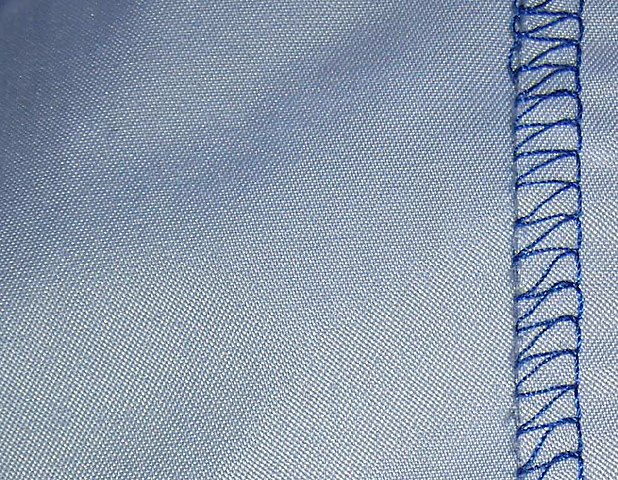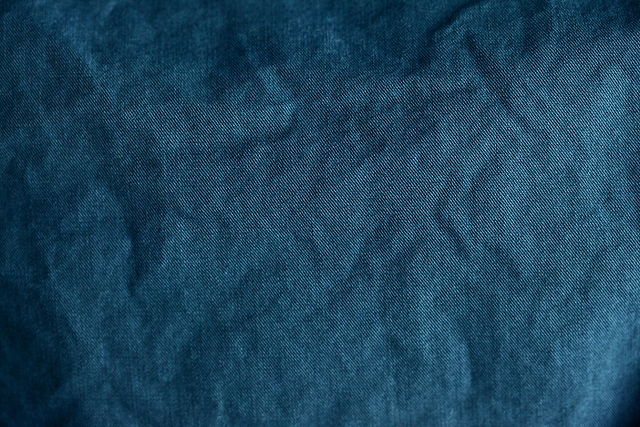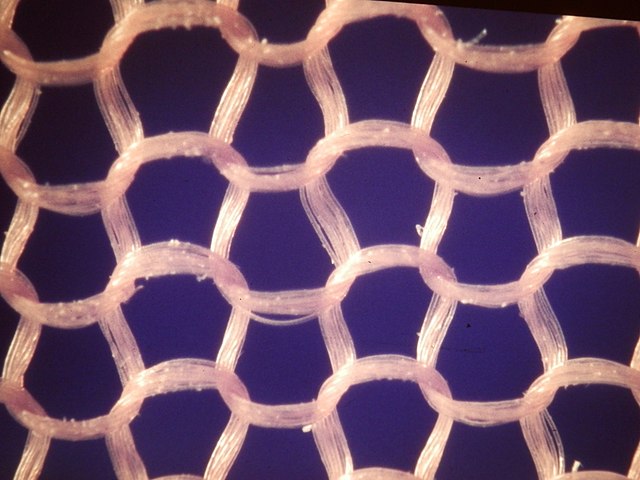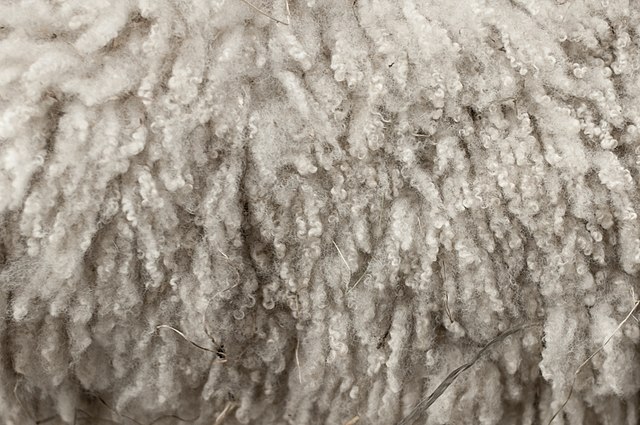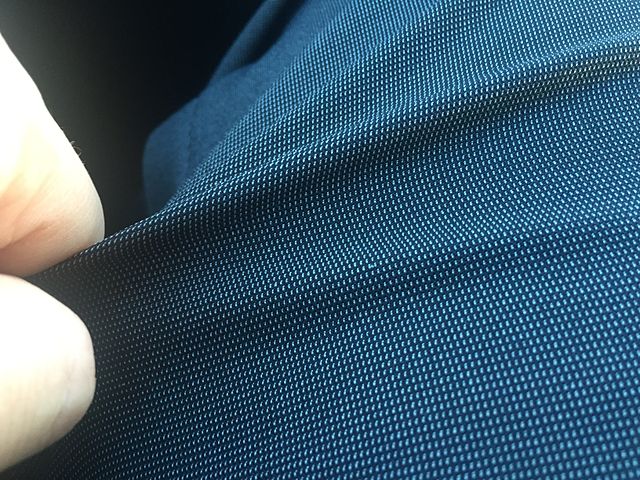
In the world of outdoor clothing, there’s a lot to know. Natural fibers, synthetic fibers, new gear, time-tested favorites.What’s really worth your time, though? What information is real, and what’s marketing hype? Today we’re going to deep-dive into polyester fabric and how it keeps you warm while hiking and backpacking.
Table of ContentsIs Polyester Warm?What is polyester?Polyester Moisture WickingHow Polyester Keeps You WarmMethods of Heat LossHow Polyester Keeps Your Heat InPolyester vs Other FabricsPolyester VS CottonPolyester VS NylonPolyester VS WoolFabric ThicknessWhy Layering is CriticalConclusion
Is Polyester Warm?
Yep. Polyester is, indeed, warm.Is it pound-for-pound warmer than other fabrics like nylon or merino? Well, that depends on a lot of factors.At the end of the day, polyester is indeed warm and it makes a great fabric for a wide range of outdoor applications. My goal is to help you understand more about it, how it works, and what you can do to get the most out of it.
What is polyester?
Polyester is a man-made fabric crafted from, essentially, plastic components. Chemists mix up polyester from petroleum components. After that, it’s forced through insanely tiny holes that squeeze the material into fiber strands small enough to be woven into fabrics.Depending on how the polyester fibers are made the resulting fabrics can have sometimes dramatically different final properties.Don’t be fooled into thinking that all polyester is the same. There are many ways the fibers and weaves can be manipulated to change the fabrics.That said, however, if you get too caught up in comparing the scientific differences of every single fiber, weave, and garment construction you’ll never get out on the trail!
Polyester Moisture Wicking
Moisture-wicking is the process of taking sweat from the skin and moving it to the outside of your clothing where it can evaporate.Some fabrics, such as cotton, absorb and hold moisture. Other fabrics, like merino wool, act like a straw and draw the moisture up through the core of the fiber. Polyester, however, is hydrophobic because it’s synthetic.Hydrophobic fibers avoid soaking up and holding moisture. Instead, the moisture simply rolls right off the fibers. In polyester clothing that means the moisture from your skin tends to skate along the fibers right to the outside of the garment where it can evaporate.In the case of polyester insulation, such as synthetic sleeping bags, if they do get wet they won’t retain as much moisture as many natural fibers. This means faster drying times.
How Polyester Keeps You Warm
Methods of Heat Loss
Warmth comes from many different factors in the outdoors. Understanding how heat works and methods of heat transfer is key to knowing how polyester keeps you warm.Staying warm in the outdoors typically requires retaining the body heat you naturally produce. To do this, you need to stop heat transfer. Heat transfer happens in one of three ways:
Conduction
Conduction happens when you sit on a cold surface. Heat moves from your body to the cold surface through direct physical contact.
Convection
Convection happens when circulating air moves past and steals the heat away from your body.
Radiation
Radiation happens as your body naturally loses energy to the environment around you via radiation (electromagnetic).
For more info on how heat travels see this article.Additionally, the body loses heat through evaporative loss. As your body sweat evaporates it consumes energy in order to do so thereby cooling you down.In order to stay warm, polyester has to help undo some of these methods of heat loss.
How Polyester Keeps Your Heat In
To prevent conductive heat loss, a layer of polyester can keep your body from coming into contact with cold surfaces. Whether it’s woven, knit, or loose insulation polyester will help with this.In order to prevent convection, you’ll need a knit polyester. Woven polyester is a very tightly packed fiber that prevents most or all air transfer. This is a good choice for blocking air movement and reducing convective heat loss.Radiation, however, cannot be stopped by polyester. Radiation coming from the body has to be reflected with specially designed insulation such as “space blanket” survival style blankets.If you want to slow down evaporative heat loss, you’ll be in good hands with polyester. Moisture is wicked from your skin onto the polyester where it can evaporate without cooling you down as much in the process.Of course, polyester insulation, as opposed to polyester fabrics, helps to insulate you by trapping dead air space around your body like any other insulative system.
Polyester vs Other Fabrics
How does polyester stack up against other fabrics? Let’s check it out.Also, if you’re interested in additional information you can find a good article with more details on cotton as an outdoor fabric here.
Polyester VS Cotton
Blue Cotton Fabric
Cotton is essentially the gold standard of bad outdoor fabrics. No other fabric has quite as bad of a reputation.Why is cotton bad?Cotton fibers are particularly hydrophilic, or water-loving. They can absorb and hold an insane amount of water or sweat and they take forever to dry out when wet (compared to other fibers).This is a problem because water conducts heat away from your body quite quickly. Compared to dry fabric, wet fabric is substantially more “chilling” to the body. So, essentially, cotton attracts and holds moisture which then speeds up how fast you become cold.Polyester, on the other hand, is a solid strand of mostly petroleum-based ingredients. This makes it hydrophobic and there’s nowhere inside the fibers for water to hide. Therefore it holds less water and dries faster than cotton.Additionally, thanks to modern fabric making techniques, polyester can be woven in ways that help insulate, repel moisture, and block air passage. These are all abilities that cotton does not have.It’s worth noting that there’s an argument to be made for the benefits of cotton in the summer. During the hottest months and conditions, the cooling nature of cotton’s hydrophilic properties may actually be desirable in some situations.
Polyester VS Nylon
Nylon Knitted Fabric Close-up
Nylon and polyester are both petroleum-based fibers. While cotton is a standout loser, nylon is a close second to polyester in terms of performance. In fact, in many cases, there are few substantial differences that will make a difference to the average consumer.Nylon is known for being slightly more abrasion resistant than polyester. Therefore it edges out a win when used for garments that will be abused such as scrambling, off-trail bushwhacking, etc.Like polyester, nylon is hydrophobic, though it can sometimes retain moisture depending on fiber type. Even in the worst case, it still retains substantially less water than cotton.Additionally, some nylon fibers can be woven into particularly wind and water-repellent configurations.For these reasons I think nylon makes a good choice for outer layers, particularly when you need durability and wind resistance (depending on fiber).As far as pure insulation value, polyester eeks out a win over nylon in this category.
Polyester VS Wool
Wool Before Processing
Wool has some crazy-cool almost magical properties that make it a tough contender for polyester to beat.Wool fibers are made like a hollow straw. These staw-shaped fibers have a hydrophobic shell but can allow water vapor (evaporated water) to pass through unobstructed.That means as you heat up and sweat leaves your body in the form of vapor, it can wick out through these hollow tube fibers. Liquid water, such as rain or sweat that has beaded up, can’t pass as easily thanks to the water-repellent fiber shells.While these cotton fibers can absorb some water, it retains its insulative ability even when wet just like polyester and nylon.Unlike polyester fibers which are manufactured to be perfectly uniform fibers, wool is an uneven crimped jumble of fibers at a microscopic level. That means more dead airspace which means more insulation.When you put wool and polyester in the ring for a fight, it’s a close match.Wool is, unfortunately, substantially more expensive than polyester, however. If your pockets aren’t deep, polyester is a clear choice.It’s also worth mentioning that wool isn’t as durable in the field or in the closet. Wool moths are a real problem and that expensive garment can be gobbled up and full of holes the next time you open the closet – a problem polyester doesn’t have.
Fabric Thickness
No matter what fabric you’re wearing, the warmth of that fabric will be largely attributable to the thickness of the fabric.If you take a lightweight polyester weave and compare it to a thick cotton sweater which one do you think will be warmer? Of course, the cotton sweater will win. Is it because cotton is warmer or better? No, it’s because we’re not comparing apples to apples.Dead air space is the key to staying warm and there are to places this happens.First, the air is trapped between your skin and the inside of the fabric. This dead air space is crucial to staying warm.On skin-tight garments, however, there is no trapped air between your skin and the fabric. So where does the insulation come from?The rest of your insulation comes from the trapped air inside and around the fibers of your clothing. It stands to reason, then, that the thicker the fabric, the more insulative air space it will contain, and therefore the warmer the final product will be.If you take an equal thickness of nylon, polyester, and wool they won’t all have the same insulative value (R-value). Wool, thanks to its kinky, wavy fibers traps air better than its competitors.That said, however, even among weaves of the same material, there may exist different R-values. How a fiber is woven or knitted in the textile factory can have a big impact on its final ability to trap air and thus insulate the wearer.It’s also worth noting that on insulated garments there’s an additional factor at play. Insulated garments, such as your winter jacket, use two (or more) layers of shell material combined with insulation fill to boost the final insulation of the garment.A winter jacket might have a nylon outer shell for wind and water resistance, polyester fill insulation to stay warm when wet, and a polyester inner liner. In this case, you have to take into consideration the individual properties and insulative values of each layer of material before understanding the performance of the garment as a whole.
Why Layering is Critical
Since no single garment can cover all situations, layering is an important factor in outdoor clothing.While a polyester knit is great for hot days, it won’t block the wind when it rips up. A woven nylon shirt can block the wind, but alone may not be the right shirt choice for all-day wear. So, how do we fix the problem?Layering is a method of combining clothing to cover all your bases.There are plenty of articles out there explaining layering in detail so I won’t divert this article to cover those bases. Instead, brush up on layering with this article from REI.
Conclusion
Is polyester warm? Yeah, it is.If you made it this far, however, you now know that there’s a lot more to the story. Simply asking whether or not polyester is warm doesn’t even begin to cover the bases.As you dive into the world of outdoor fabrics you’ll be in for a big surprise. There are always new fabrics. Every manufacturer claims theirs are the best. Every garment maker has a “revolutionary” new way of using them.Understanding how insulation works, what different types of fabrics are good at, and how it applies to you is the real secret. Remember to dig for the facts, look for real information, and don’t get lost in baseless opinionated wanderings.Of course, everyone has their preferences, and experience is a great teacher. Seek out friends who have experience in the field, ask them what works for them, and don’t be afraid to try new garments, new layering systems, and new advice!

